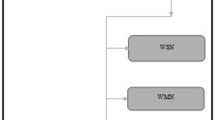Abstract
The main purpose of this work is to exploit MANET environment in military environment to broadcast the data through efficient data transmission rate. This eventually results in different security issues like conflict and collision. These complexities could minimize the distribution of the packet ratio. Constant position node environment has been used in prevailing system, with interference-aware routing based on its nearby nodes. The previous researches could not handle the interference effects that occur in run time, and as a result, the performance of the system might get affected. In order to handle these issues, interference effect is evaluated in the proposed work to eliminate the packet loss. A novelty based on interference avoidance using coefficient of restitution measure approach has been proposed. This will obtain the incoming packets from more than one node, and it will calculate the “restitution” collision of the considered node. Improved route establishment is attained with minimum interference effect by making use of this measure. Genetic algorithm is utilized in this work to choose the most effective path from the available paths. The simulation results show that the proposed work provides significant results as compared to the existing techniques.




Similar content being viewed by others
References
Ahmed DEM, Khalifa OO (2017) An overview of MANETs: applications, characteristics, challenges and recent issues. Int J Eng Adv Technol 6(4):128–133
Sharma S, Jaswak KB (2017) MANET review: characteristics, routing protocols, attacks and performance metrics. Int J Adv Res Ideas Innov Technol 3(6):392–399
Singh S, Singh G (2017) ‘Study of routing protocol with link estimation time in MANETs. Int J Adv Res Comput Sci 8(3):531–535
Mohanarangan S, Sivakumar D (2017) Issues and challenges of TCP congestion control in mobile adhoc networks. Int J Innov Adv Comput Sci 6(6):277–287
Eckles D, Karrer B, Ugander J (2017) Design and analysis of experiments in networks: reducing bias from interference. J Causal Inference 5(1):1–32
Rao CV, Padmavathy N, Chaturvedi SK (2017) Reliability evaluation of mobile ad hoc networks: with and without interference. In: IEEE 7th International Conference on Advance Computing (IACC), pp 233–238
Narasimha M, Krishnamurthy SH, Kuchibhotla R (2017) U.S. patent no. 9,807,633. Washington: U.S. Patent and Trademark Office
Alwadiyeh ES, Ala’fa A (2013) Interference-aware multipath routing protocols for mobile ad hoc networks. In: IEEE 38th Conference on Local Computer Networks Workshops (LCN Workshops), pp 980–986
Canales M, Gállego JR, Hernandez-Solana A, Valdovinos A (2005) Interference-aware routing with bandwidth requirements in mobile ad hoc networks. IEEE Conf Veh Technol 62(4):1–5
Chao GU, Qi ZHU (2013) Interference aware routing for mobile ad hoc networks based on node’s sending and receiving capabilities. J China Univ Posts Telecommun 20(4):73–79
Phu HL (2015) Performance analysis of interference-aware routing protocol for mobile ad hoc networks. Int J Adv Res Comput Commun Eng 4(5):1–5
Fazio P, De Rango F, Sottile C (2012) An on demand interference aware routing protocol for VANETS. JNW 7(11):1728–1738
Le PH (2014) A source routing interference-aware multi-path routing protocol for mobile ad hoc networks. Int J Future Comput Commun 3(5):304–308
Zhang X, Liu Q, Shi D, Liu Y, Yu X (2007) An average link interference-aware routing protocol for mobile ad hoc networks. In: IEEE Third International Conference on Wireless and Mobile Communications, pp 10–10
Lutimath NM, Abhilash D, Murali Mohan BM (2017) Interference aware hybrid multipath protocol for mobile ad hoc network. Int J Pure Appl Math 114(10):25–34
Ahn CW, Ramakrishna RS (2002) A genetic algorithm for shortest path routing problem and the sizing of populations. IEEE Trans Evol Comput 6(6):566–579
Seifried R, Schiehlen W, Eberhard P (2005) Numerical and experimental evaluation of the coefficient of restitution for repeated impacts. Int J Impact Eng 32(1–4):508–524
Malik R, Mittal M, Batra I, Kiran C (2011) Wireless mesh networks (WMN). Int J Comput Appl 1(23):68–76
Zadin A, Fevens T (2016) Neighborhood-based interference minimization for stable position-based routing in mobile ad hoc networks. Future Gener Comput Syst 64:88–97
Author information
Authors and Affiliations
Corresponding author
Rights and permissions
About this article
Cite this article
Vignesh, V., Premalatha, K. Optimal route path sustainability in military information system with reduced interference effect. J Supercomput 75, 6106–6117 (2019). https://doi.org/10.1007/s11227-018-2667-0
Published:
Issue Date:
DOI: https://doi.org/10.1007/s11227-018-2667-0




